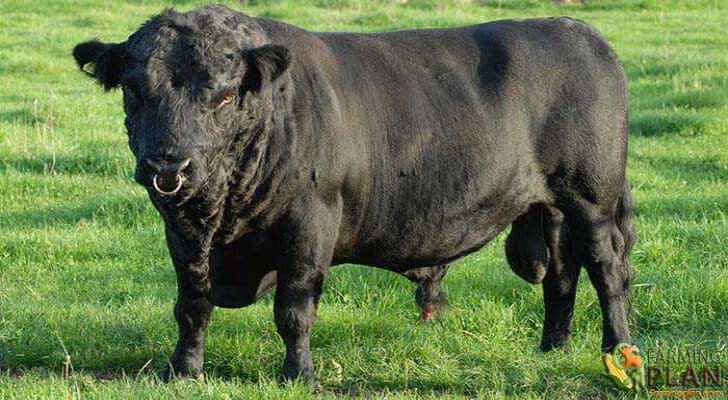The origin of Dexter cattle was raised by small farmers in the south and southeast of Ireland. This race can be transport to England in 1882. The name of this species comes from an agent of Lord Howard. They tried to obtain a cow of a small size suitable for domestic purposes and for the priming without leaving the limits of his hacienda of Valentia Island. It also sought to improve dairy farming for Kerry cattle.
Others say that the Dexter cattle are the result of crossings between Kerry and old North Devon or French bread. It is also possible to arise as a mutation within the population of the Kerry breed. Several biologists have concluded that Dexter cattle are heterozygous over a partially dominant gene that has a lethal effect on homozygotes.

Mating between Dexter cattle produces 25 percent Dexter and 25 percent non-viable achondroplastic animals (bulldog calves). The latter usually die in utero and leave for abortion. On the basis of these results, it seems that the best procedure to commercially exploit the Dexter cattle would be to cross it with another breed. And so get half-blood animals and avoid bulldog-type monstrosities. You May Also Like To Read Hereford Cattle
Characteristics of Dexter Cattle
Dexter cattle is the smallest of all British cattle. The adult cows have an average weight of 290 kg. Although the bulls can reach 400 kg. Its layer is of uniform color, be it black or reddish, and the merit is equal in both cases; the hair is short and thin. The flexible skin, of medium to light thickness, has pigmentation. The head is short and broad (more than Kerry cattle).
While the horns are of medium length and have curves forward and up, presenting black tips. The neck is short and thick and the backs are of medium width and with good filling from behind. For a breed of small size like the body is relatively long, with ribs with arches and a deep chest. The hips are also proportionately broad and the hindquarters are hard, the flesh reaching to the hocks.
The udder is wide behind and well held in front, with nipples of moderate size and well placed. The legs are short, especially in the reeds. This breed has strong bones, but they are stronger than in the cattle Kerry and Wallace. The elevation to the cross is only 100 to 110 cm in the adult cows.
Food
Dexter livestock is omnivorous and can subsist on grazing pastures very much in the ground where normally only the sheep would find sustenance. They can also consume the harshest forages, devouring weeds and thistles to reduce all vegetation to the uniform state of stubble. Being small and undemanding is ideal for small farmers who have a little land extension. You May Also Like To Read Angus Cattle.
But they have abundant residues since these animals require only 60 percent of the feed needed for the maintenance of a 530 kg cow in modern dairy herds. For feedingstuffs subject to a more intensive regime, and in order to maintain milk production, other feeds such as hay, straw, silage and concentrated feed are required.
Distribution, Surveying and Soils
The Dexter cattle are descended from a mountain race that was accustomed to roaming. The bare mountain slopes in almost wild conditions in the south and southwest of Ireland. It is extremely resistant and can be winter in the open, even under severe conditions. Due to its small size, it can be grazed in damp terrains that would be muddy by the trampling of majors. They are found both in the clay plains and on the rocky slopes, and their margin of adaptability is very wide.
Usage
Dexter cattle are essentially dual-purpose and heifers usually give birth for the first time at two years of age. They continue with a long reproductive life (from 8 to 10 calves). Reproduction is regular at annual intervals and animals are very docile as domestic cows. The average yield of milk from this breed is 2.409 kg of milk with 4.18 percent fat.
Although there are other cows that gave twice this amount in lactation. Therefore, to consider an efficient feed processor. At the same time, Dexter livestock is an excellent meat producer. Although they are also very efficient meat producers when crossing Angus or Shorthorn cattle. You May Also Like To Read Highland Cattle.
Special Feature
One of the characteristics of the Dexter cattle is that it has Tipperary meat up to the heels. Purebred animals with a weight of 320 kg have always reached prices above average for the quality of their meat. Dexter animals impose their distinctive characters on any type of breeding so that mestizo animals always have a great commercial value. This species has fingers that converge in a particular shape and the animal tends to walk with the outside, especially this occurs in the hind legs.
Conclusion
Do you have Dexter cattle? If so, congratulations! You’re in good company. They are a breed of cattle originating from Ireland and they grow to be about half the size of a traditional Hereford cow and one-third the size of a Holstein Friesian milking cow. In this guide, we covered everything you need to know about these small yet mighty creatures including their history, how much milk they produce, what kind of feed is best for them, how many calves per year they can give birth too as well as tips on caring for your Dexters both indoors and out. We hope that this blog post has been helpful – now go find yourself some Dexters!
As A Reference: Wikipedia


